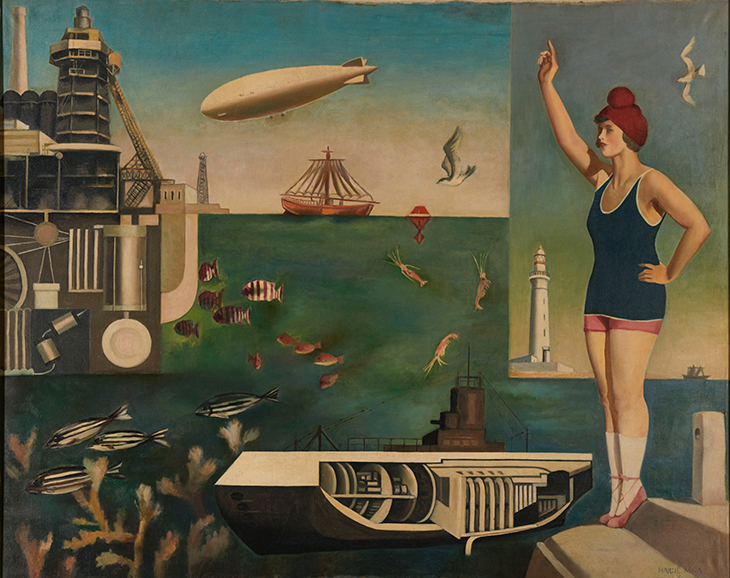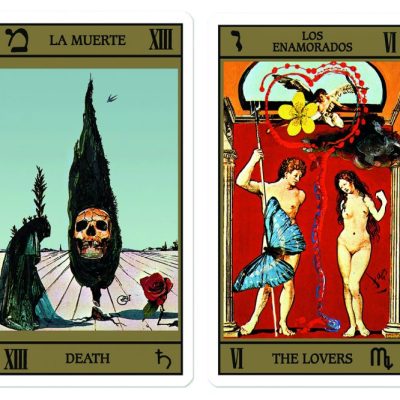This review of ‘Surrealism Beyond Borders’ at the Metropolitan Museum of Art, New York (closed 30 January), was published in the February 2022 issue of Apollo. The exhibition runs at Tate Modern, London, from 24 February–29 August.
During the mid 1930s, when the Surrealist group was turning into a revolving door of newcomers and embittered departures, their leader, André Breton, fled the drama in Paris for a jolly to Prague. Hundreds turned out to hear his lectures, newspapers paid tribute, he held forth on radio and signed books for excited fans. No sooner was he back than he departed again on a Norwegian banana boat bound for Tenerife and, having reached the outer edges of the continent, excitedly proclaimed that he had ‘washed my hands of all of Europe’. Alas, his hosts proved dull and soon enough he was scurrying back to Paris.
With efforts afoot to bring more diverse and global perspectives to Western art history, Surrealism is a sound place to start, not merely due to Breton’s wanderlust but because he increasingly branded the movement as a global concern. He published an ‘International Bulletin of Surrealism’ and organised a slew of wide-ranging surveys in cities from Mexico City to Prague, Copenhagen and, again and again, Paris. The goal of ‘Surrealism Beyond Borders’, curated by the Met’s Stephanie D’Alessandro and Tate’s Matthew Gale (and travelling to Tate Modern this month), is to release the persistent grip of Paris on our imaginations and take in the world.
It opens with Marcel Jean’s magical Surrealist Wardrobe (1941), a hefty cupboard painted with half-open shutters to give the paradoxical illusion of closing us within while we glimpse the meadows and sky that apparently lie without. The war had marooned the Frenchman Jean in Budapest when he painted it. It’s an appropriate start since much of the show’s work comes from the movement’s later years, long after Breton founded it in the mid 1920s. Moreover, the war produced the displacement that served to create so much of its international scope. And so we arrive as if in to some Surrealist Casablanca where Breton is Bogart, running the last-chance gin joint (‘Andy’s’ perhaps?) through which all desperadoes must pass.
Surrealist Wardrobe (1941), Marcel Jean. Photo: © MAD, Paris/Jean Tholance; © 2021 Artists Rights Society (ARS), New York/ADAGP, Paris.

With visas in hand, where shall we go? Sadly, the answer is everywhere and nowhere at once, for the show dispenses with stiffly structuring narratives and chronologies and opts, all too often, for familiar Surrealist categories in which to gather all manner of disparate work. In one section, on dreams, in addition to the already renowned Ernst and Tanguy, we encounter the Filipino Hernando Ruiz Ocampo, and the Brazilian Tarsila do Amaral; in another, entitled ‘Beyond Reason’, we find the Japanese artist Harue Koga alongside Dušan Marek, a Czech film-maker who settled in Australia – and there’s little sense of what distinguishes them in this global picture. Sometimes, places do resolve into focus, such as in one section on the Caribbean, another on Mexico City, and particularly in Czechoslovakia, where the Surrealists’ inwardness rubbed against the grain of Soviet dictatorship. While the catalogue – a fine, capacious, scholarly thing – describes in detail the Surrealist circles in these particular locales and brings them to life, the show – not as gargantuan as you might expect – can’t produce enough depth and nuance to build a picture.
Umi (The Sea) (1933), Koga Harue. National Museum of Modern Art, Tokyo

The fragmentation and levelling that this loose thematic structure produces is thrown into relief by the surprisingly brief coverage of the Surrealists’ interest in ethnographic art. Many in the group were anti-colonial, and several writers – affiliated or opposed to or otherwise swayed by the group – including Georges Bataille, Michel Leiris and Roger Caillois, were curious about the links between what the anthropologist Claude Lévi-Strauss called ‘the savage mind’ and what the Surrealists imagined of Western neuroses. The most notable exhibit to address this is a finial from a slit gong made by people from Vanuatu, which was exhibited in one of the group’s typically internationalising shows in New York in 1960, ‘Surrealist Intrusion in the Enchanters’ Domain’. Of course, works like this were simply ciphers on to which Surrealists projected whatever notions entertained them – notions no more accurate than those of hungry colonisers. But some years ago, these concerns were the object of considerable academic interest; here, they are no more prominent than anything else in this kaleidoscope. It’s a symptom of how curatorial concerns have moved on from questions about modernism and primitivism, which exercised the 1980s, to today’s preoccupation with globalisation.
Aside from the undoubted impact of Breton’s proselytising, Surrealism’s international success surely has much to do with the simple fact that a style premised on introspection could be packed up and moved elsewhere – and all the better if the journey caused a little disorientation. Yet some things could be lost in translation: the Paris Surrealists had a set of shared reference points in French literature and wider European modernist culture, but what could the style mean to Eugenio Granell, who fled Fascist Spain for the Dominican Republic, then fled its own authoritarian regime for Guatemala, and then to Puerto Rico? In instances like these, one senses that the style is being packed for shipping: stripped down to a language of blobs and weirdness and not much else. It leaves an impression of late Surrealism as a hotchpotch of cut-rate Tanguy-followers, as banal in Cairo as they were in Tokyo.
The Pi Bird’s Night Flight (1952), Eugenio Granell. Photo: Margen Fotografía; © 2021 Artists Rights Society (ARS), New York/VEGAP, Madrid

This is not to deny the movement’s success: the style spread because it became the hippest, most cosmopolitan language of modern alienation. It could be accessible, easily generated, sometimes spooky or titillating, and chic collectors were gently scandalised by it. But so often, particularly in its painted output, it’s exactly what Clement Greenberg meant when he complained about ‘the arbitrary’: art that seems to have no rigour, no formal constraints, no compositional terms with which to wrestle and win. It’s telling that one of the best works in the show is Arshile Gorky’s Water of the Flowery Mill (1944), a kind of vaporised biomorphism in which the usual plastic blobs are flattening and spreading into the beginnings of new formulation: Abstract Expressionism. When Louis Aragon was rhapsodising the uncanny in the Paris Arcades and Max Ernst was painting petrified cities, you couldn’t want anything more. But all good things come to an end.
From the February 2022 issue of Apollo. Preview and subscribe here.



